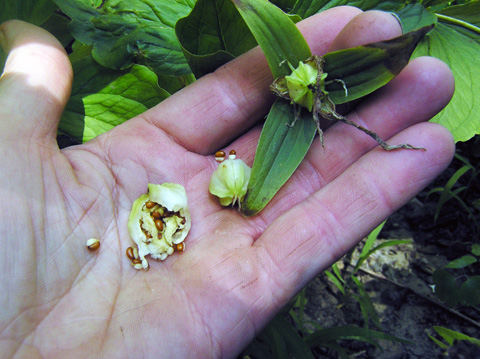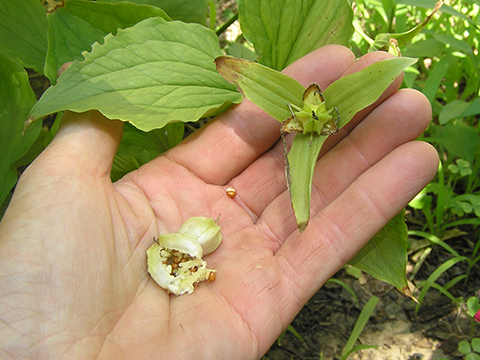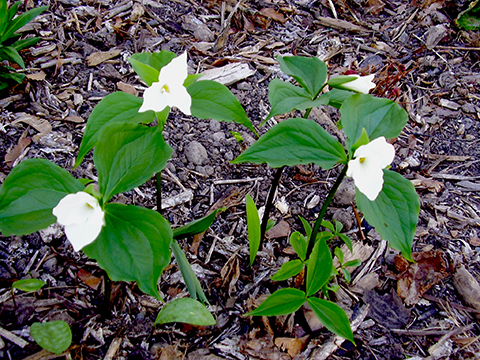 |
| Home | Ordering By Mail | Purchase Manual: Using Native Plants in Urban Landscapes |
|
|||||
Species Name: Trillium grandiflorum
Common Name: White Trillium
Zone: 3 to 8
Distribution: Maine to Minnesota in the north, to Pennsylvania, Ohio and in mountains south to Carolinas.
Seed collection: Seed is contained in a fleshy capsule that develops on top of the flower stalk. The seed matures about 8 to 10 weeks after flowering, which may range from early to late July in NY. The capsule changes color slightly from green to a yellow-green and the seed color changes from white to light brown. Monitor the capsules closely during this time as the seed capsule will fall apart and the seed will be dispersed in short order. Using your fingernail inspect the capsule to check on the seed, when the seed appears light brown begin collecting the capsules. Each capsule contains a dozen or more seeds.
Seed handling: Seeds should be kept moist after collecting as dry seed losses viability quickly. Place seed in moist potting mix if storing for any length of time. Seed should be planted in native soils as soon as possible and let nature take care of the rest.
Germination requirements: Seed that is stratified or sown immediately will generally germinate the first spring and put out a root that develops into a rhizome. No shoot will develop the first growing season. A slender cotyledon will emerge above ground the second spring and a single oval true leaf the third year. By the fourth year and after the plant will have the typical three leaves arranged equally 120* apart around the stem. The rhizome continues to develop and store nutrients until it has sufficient food reserves to initiate flowering.
Ecology: Trillium grows best in rich moist soils with the pH slightly acid to neutral. It tends to grow in maple, birch, beech forests.
Trillium flowers in early spring before the canopy trees have fully leafed out. The pant uses this time of maximum sunlight to photosynthesize food and store this food in its rhizome to initiate flowering the following year. Once the canopy has fully leafed out food production slows and as the seed capsule nears maturity the leaves senesce and the plant goes dormant waiting until the following spring to emerge and flower once again.
In the wild trillium seed is dispersed by ants. The ants drag the seed and attached eliasome back to their nest. The |eliasome is eaten and the seed discarded by the ants where it can then germinate.
Trillium is fairly easy to grow from seed but the plants are very slow to develop. T. Grandiflorum is said to take 7 to 8 years before flowering and under natural conditions may take several years longer. Given this slow development a large woodland carpeted in trillium is the wildflower equivalent of an old growth forest and should be protected as such. Resist the urge to collect wild grown plants for your garden but instead help propagate trillium in the wild by collecting and dispersing the seed to new locations and surrounding areas for future generations to enjoy.
As trillium is a preferred food of white tail deer it is especially important to control the deer population and deter deer browsing of trillium and other vulnerable plants.

Trillium seeds have turned brown and are ready for collection about mid-July in NY

Broken seed capsule reveals the ripe seed inside .

The whole reason to collect and naturalize white trillium seed, the FLOWERS!
this page posted January 6th, 2014